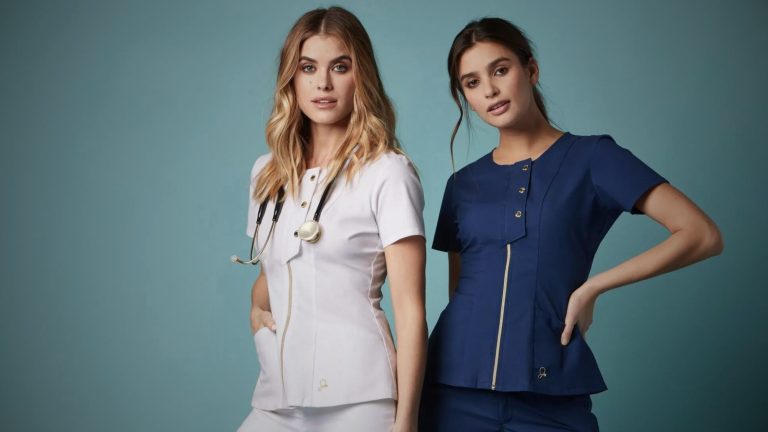Medical staff members that are directly involved in patient care, such as surgeons, nurses, and physicians, typically dress in women’s scrubs. Other professionals, like veterinarians and others in the beauty sector, increasingly wear them as well. Short-sleeved tunics and pants are typically the components of scrubs. Because of their straightforward construction, any potential contamination has few locations to hide.
Scrubs for women have been frequently highlighted in the headlines since the COVID-19 outbreak as a result of rising demand and supply problems. You may have heard tales of how people and businesses from all across the nation collaborated to produce scrubs for the relevant university or any professional organisation, but have you ever wondered how women’s scrubs are made?
History of Scrubs:
Long into the 20th century, the majority of medical professionals, such as doctors and surgeons, dressed normally. When doing surgery, surgeons did use materials like butchers’ aprons. But they were more for the surgeon’s protection from the patient’s illness than for the patient’s protection from infection. The 1918 Spanish flu pandemic stimulated increased interest in antiseptic theory, leading to the use of items like cotton gauze masks by surgeons.
By the 1940s, antiseptic treatments were frequently used to stop the spread of infections. And to underline this cleanliness, operating rooms and the women’s scrubs that surgeons wore were mostly white. Yet, because of the eye strain caused by this stark white atmosphere for both staff and surgeons. Women’s scrubs started to turn green in the 1960s. Green scrubs were originally referred to as “surgical greens” because they helped lessen eye strain. And made blood stains less noticeable.
By the 1970s, this “surgical greens” uniform had become the norm. Today’s women’s scrubs come in more colours than simply green. But they often have a single block colour and a straightforward design with a square-cut shirt with a V-neck and patch pockets. And straight trousers that have an elastic or drawstring waist. They are typically unisex as well. The ease of mobility provided by this relaxed, non-restrictive form is crucial for surgeons.
Non-Medical Women’s Scrubs Historical Development:
As previously indicated, doctors and surgeons tended not to wear uniforms in the past; in fact. The only healthcare workers that did so were nurses. The Florence Nightingale nursing school opened in 1860. And the nurses there wore grey tweed dresses with a grey jackets and a white cap. This is regarded to have been the first nurse uniform. This uniform’s main goal was to convey professionalism and inspire respect. Since this time, nurses’ uniforms have tended to evolve in line with trends rather than for practical reasons. And they have always been motivated by the need to project professionalism.
When World War One broke out, some useful components were added to uniforms. These included adding pockets to aprons and making gowns a little bit shorter so they were simpler to move in. As a symbol for medical services, a red cross was also worn on the uniform’s breasts or sleeves. Once the traditional white nurses’ cap was eliminated from the uniform in the 1970s. Far less constricting open-neck shirts were introduced in the 1980s.

Scrubs didn’t become a common choice for nurses’ uniforms, though, until the 1990s. Nursing women’s scrubs, often known as non-surgical women’s scrubs. These are typically different from those worn by surgeons. Compared to surgical scrubs, they are more stylish, have a greater selection of colours and patterns. And can be gender-specific while still being comfortable.
Final Words:
Medical cargo scrub pants can be a great option for your standard office wear if you work in the healthcare industry. These soft, useful, and long-lasting clothing shield users from pollutants and infectious diseases. While also providing numerous other advantages. Consider purchasing a pair of medical women’s scrubs today if you’re seeking a wonderful set of clothes to wear at work or just following fashion trends.


